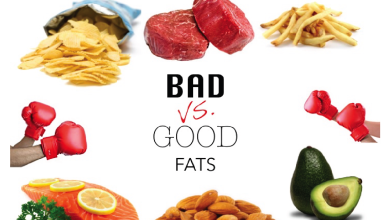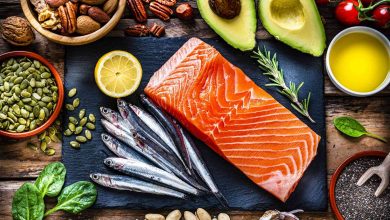Exploring the World of Low-Fat Foods: A Comprehensive Analysis
Exploring the World of Low-Fat Foods
Introduction:
The relevance of food choices cannot be stressed in a world where health and well-being are becoming increasingly important. Eating low-fat meals is one dietary strategy that has grown in favor. With a focus on definitions, advantages, and potential drawbacks, this article seeks to explore the world of low-fat foods and provide guidance on how to design a low-fat, well-balanced diet that promotes general health.
Defining Low-Fat Foods:
Foods labeled as low-fat have fewer dietary fats overall, especially less saturated and trans fats. While the term “low-fat” might have different meanings in different places and from different regulatory agencies, it usually means that a product has less calories from fat than its standard equivalent. This decrease is frequently accomplished by a variety of techniques, including the use of fat replacements, component substitutions, and cooking technique modifications.
Benefits of Low-Fat Diets:
- Weight Management: Low-fat diets are popular for a number of reasons, chief among them being their correlation with weight control. Since fats are high in calories, cutting back on fat consumption can help create a calorie deficit, which is essential for weight reduction or maintenance.
- Cardiovascular Health: Reduced consumption of trans and saturated fats is associated with better cardiovascular health. Elevated cholesterol levels can be a result of high fat intake, which raises the risk of heart disease. Making reduced-fat substitutions might be a first step toward eating a diet low in cholesterol.
- Type 2 Diabetes Prevention: Reducing dietary fat consumption, particularly saturated fats, may aid in the prevention or treatment of type 2 diabetes, according to some research. Whole grains, fruits, and vegetables are frequently the mainstays of low-fat diets, which helps to enhance glycemic management.
- Digestive Health: When paired with foods high in fiber, low-fat diets can help support digestive health. Diets heavy in fat, particularly unhealthy fats, can aggravate digestive problems; these problems can be mitigated by switching to lower-fat foods.
- Overall Health and Longevity: Overall health and lifespan are linked to eating a diet high in vital nutrients and low in harmful fats. Nutrient-dense food consumption is frequently encouraged by low-fat diets, which improves general health.


Potential Pitfalls of Low-Fat Diets:
- Nutrient Deficiency: A frequent problem with low-fat diets is the risk of deficiency in certain nutrients. The absorption of fat-soluble vitamins (A, D, E, and K) is influenced by fats. An too low-fat diet might result in insufficient absorption of these vital vitamins.
- Processed Foods Trap: Certain low-fat goods on the market could add sugars, salt, or other flavor-enhancing ingredients to make up for their lower fat level. Eating low-fat processed meals may unintentionally result in the ingestion of extra sugars and preservatives, which might offset any possible health advantages.
- Satiety and Satisfaction: Meals taste better and feel more satiating when fats are present. People who follow an extremely low-fat diet may have feelings of dissatisfaction, which might prompt them to overeat or snack more in an effort to make up for the lack of flavor and fullness.
Strategies for a Balanced Low-Fat Diet:
- Emphasize Whole Foods: Whole, minimally processed foods are the cornerstone of a healthy low-fat diet. Lean proteins, whole grains, legumes, fruits, and vegetables should make up the majority of a person’s daily diet.
- Choose Healthy Fats: It’s important to include sources of good fats like avocados, nuts, seeds, and olive oil while cutting back on total fat intake. These fats support general health since they are high in important fatty acids.
- Read Labels: It’s important to carefully read labels while choosing low-fat packaged meals. Pay attention to any added sugars, salt, or other additions that can lower the product’s nutritional value.
- Moderation and Balance: Balance and moderation are essential for a low-fat diet to be effective. Aim for a well-rounded diet that includes a range of food categories and satisfies overall nutritional demands rather than just cutting fat.
- Regular Physical Activity: Regular physical exercise improves general health and aids in weight management when combined with a low-fat diet. One essential element of a comprehensive approach to wellbeing is exercise.
Conclusion:
Diet has an indisputable part in the pursuit of maximum health. When carefully considered and supplemented with necessary nutrients, low-fat diets can support cardiovascular health, weight control, and general well-being. But it’s important to stay away from the dangers of highly processed low-fat foods and possible vitamin shortages.


Utilizing a well-rounded strategy that prioritizes whole foods, healthy fats, and conscientious decision-making can optimize the advantages of a low-fat diet without compromising nutritional value or enjoyment. In order to achieve a healthy lifestyle, people must continue to grasp the subtleties of low-fat diets and embrace a holistic approach to nutrition as they negotiate the complexity of food options.




